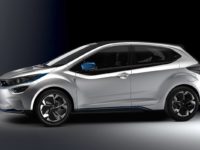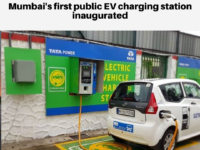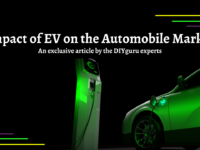In a nutshell: What’s special about a hybrid car?
There are a number of different ways to charge your electric car’s battery pack. Being faced with normal and fast charging methods, and different connector types, can be a little daunting at first. But in fact, it is much more straightforward than it first appears! In this short guide we’ll let you in on all the key information you need to know.
Essentially, it comes down to two main considerations: WHERE you decide to charge and HOW FAST you decide to charge. These are interconnected, and the charging speed will depend on which particular EV you own, its battery capacity and what sort of charging system you are using.
Types of Electric Vehicle charging
Level 1 EV charging: Level 1 electric vehicle charging is rated at 120 volts. The hardware required for this, which is a cord with an attached control-box, is supplied as standard with every electric vehicle. One has to simply plug-in to a three-Prin (grounded) wall socket. Using this charging technique usually takes 16 to 20 hours to fully charge the vehicle’s batteries depending upon its capacity. The advantage of using this charging type is that it does not require the installation of additional hardware. One simply needs to the park near a three-pin wall socket and plug-in the charging cable. The drawback of this technique is that it takes a lot of time to juice up the batteries.
Level 2 EV charging: Level 2 charging for electric vehicles is rated at 240 volts. Additional hardware is required for this type of charging. On the purchase of an electric vehicles, some manufacturers will install an AC wall-box charger at the customer’s home and in some cases the place of work as well, either free of cost or otherwise, in order to enable level 2 charging. With the use of this, an electric vehicle can be fully charged in as early as 6 hours or a little over, depending upon the battery capacity. Level 2 charging is considerably faster in comparison to Level 1 charging. Not only this, but it is said to be more energy-efficient as well. However, this charging technique is expensive because of the use of more sophisticated hardware.
Level 3 EV charging:The level 3 charging for electric vehicles is what one will find at public charging stations. Called as DC fast charging, it converts the AC current, into DC current for direct storage in electric vehicle batteries. It is usually rated at 480 volts. With the use of a DC fast charger, an electric vehicle can be charged to 80 per cent in less than an hour. Tesla superchargers are able to reach the same charging capacity within half an hour. The hardware required for the same is quite expensive and is usually found at public charging stations. In order to use them, one needs to pay a certain amount to the service provider.
Join our list
Subscribe to our mailing list and get interesting stuff and updates to your email inbox.

















